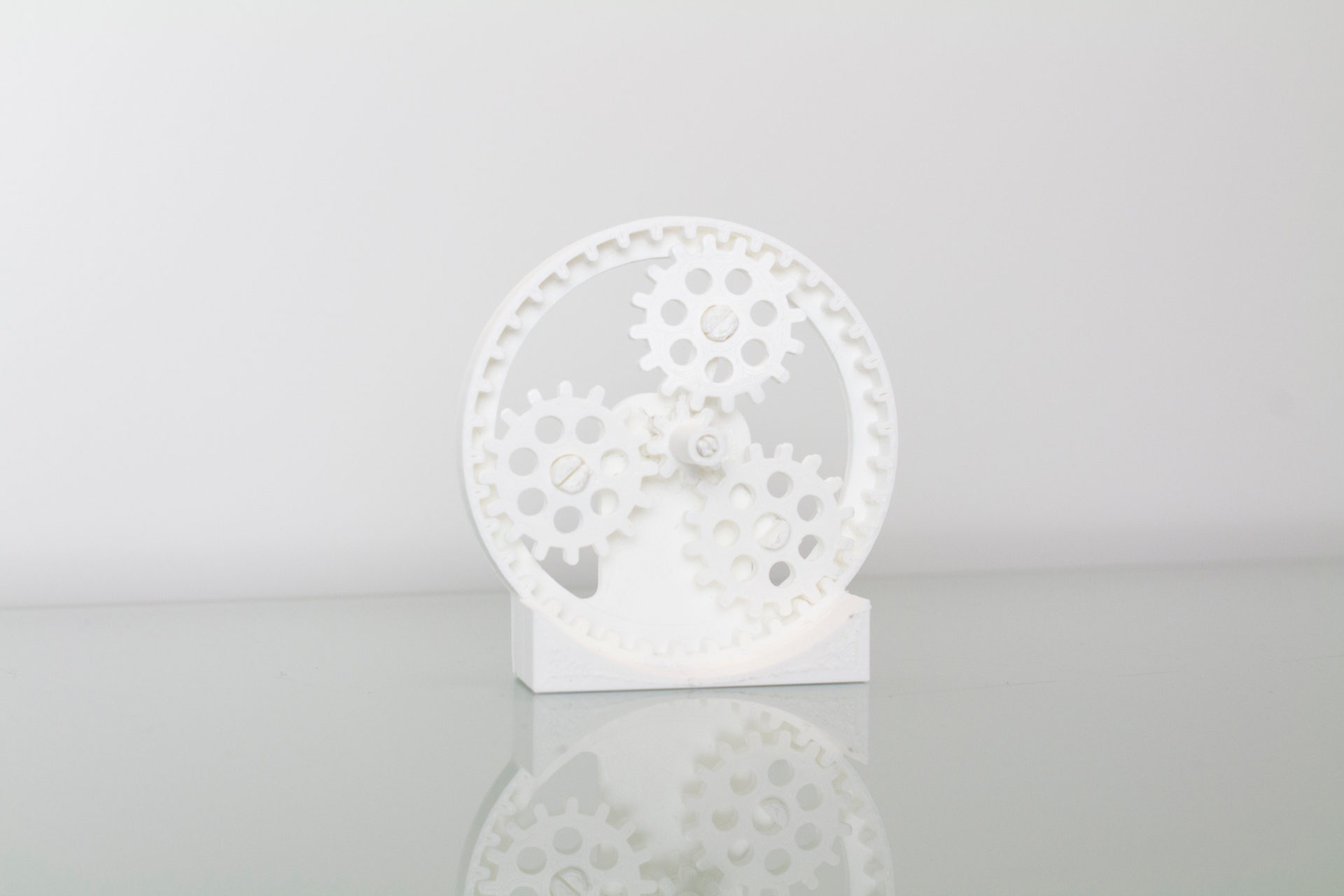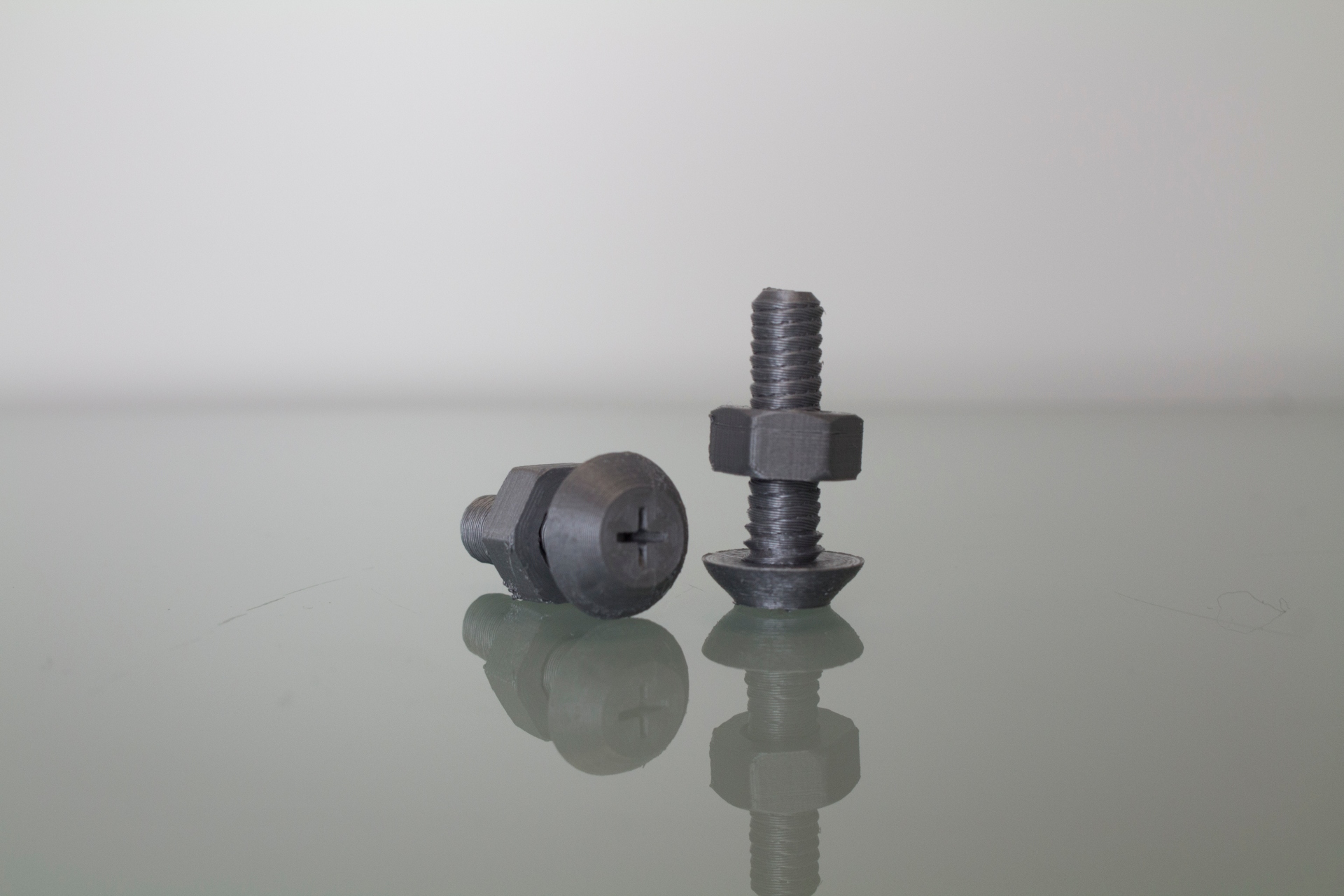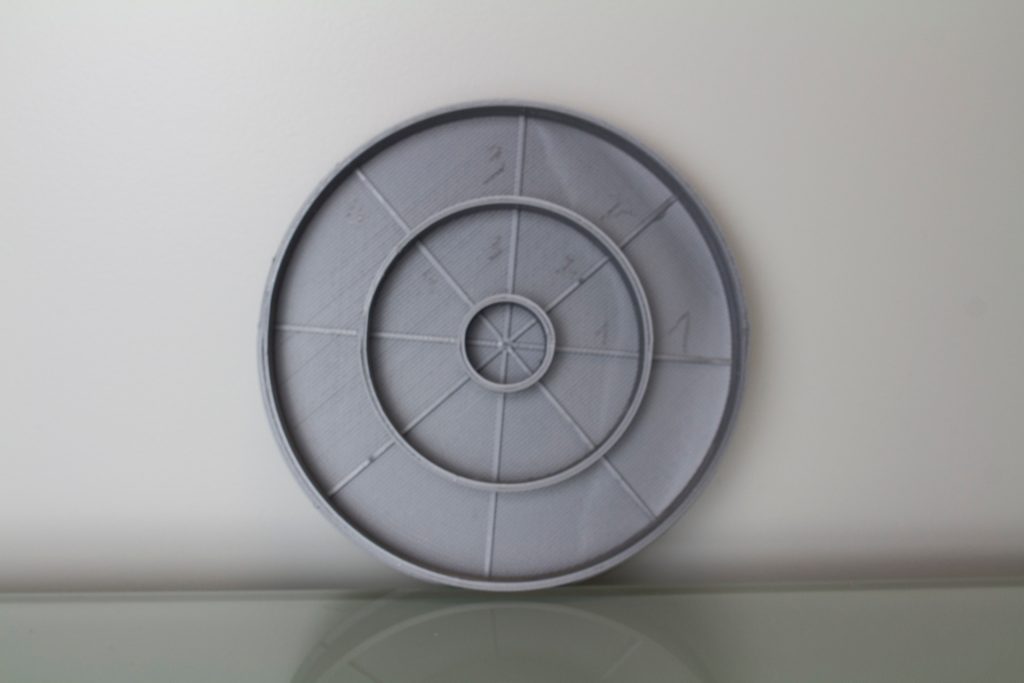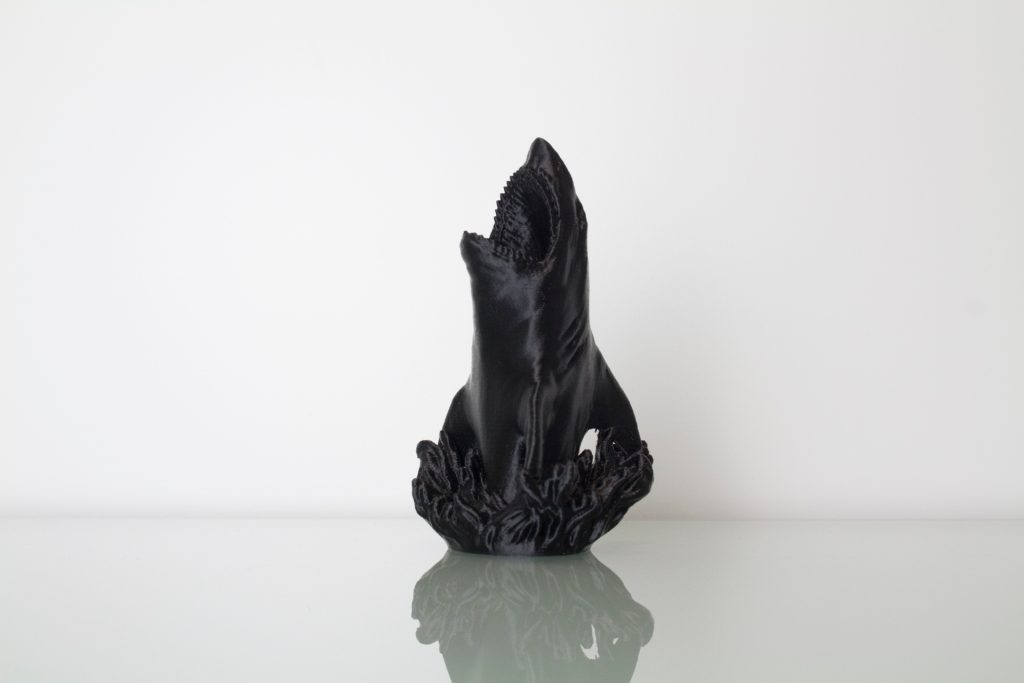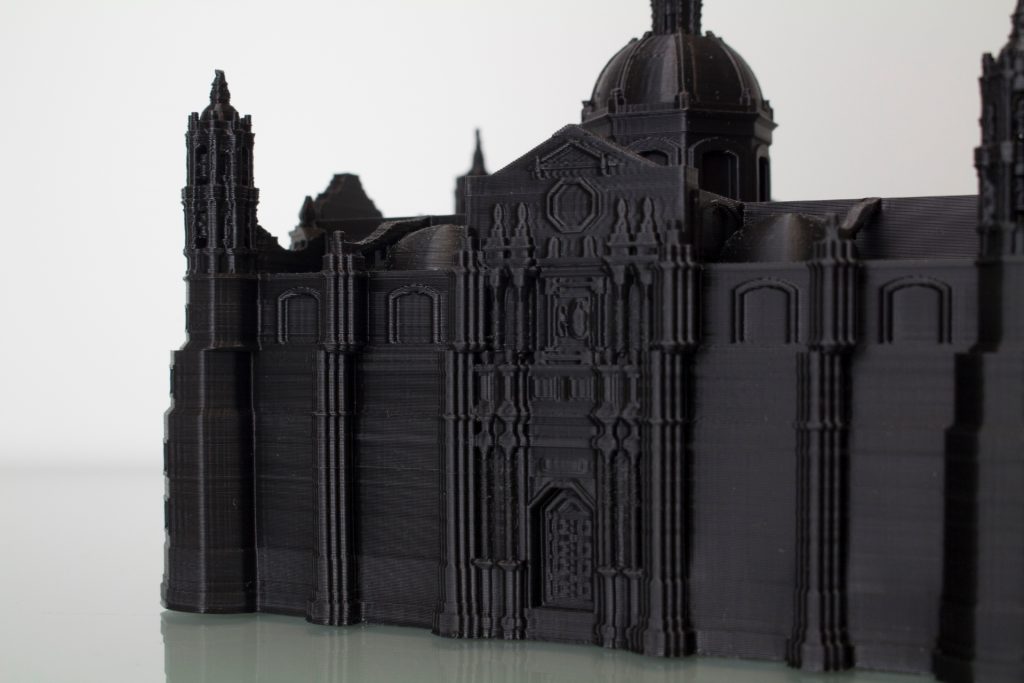3D Printing Industry reviews the BCN3D Sigmax R19 3D printer.
Designed by Spanish manufacturer BCN3D, the Sigmax R19 is a large format dual extrusion FFF system aimed at SMEs and professionals in the design and engineering sectors. With a price tag of around €4500, the Sigmax R19 promises to deliver professional-grade prints in large numbers faster than its competitors.
The Sigmax R19 sports a larger than average printing volume of 420 x 297 x 210mm, making it a prominent figure among other systems in its price range. BCN3D also prides itself on its unique IDEX (independent dual extruder) system, which sees two hotends housed in two separate printheads that are locked together in the Y axis but free to move independently in the X axis. With a maximum nozzle temperature of 290°C, the Sigmax R19 is capable of extruding some of the less cooperative filament types such as ABS or PETG.
Most functions on the machine can be controlled through the full color touchscreen found on the front of the printer. Connectivity options include a USB port and a microSD slot. The Sigmax R19 is supported by BCN3D’s repackaging of the widely used open source Cura slicer – aptly named BCN3D Cura.

Doubling down on size
BCN3D has gone above and beyond with the output potential of the Sigmax, which has double the build area and volume of its younger brother, the Sigma R19. A large body is needed to contain a large build area, however, and the Sigmax’s steel and aluminium frame measures in at 675 x 440 x 680mm and 18kg, meaning the professional system will require a dedicated, sizable space on the user’s workbench.
Upon operating the Sigmax, the considerations that went into its design become very apparent. The inside of the frame is lined with LEDs to provide visibility in dark printing environments. There are two spool holders housed conveniently inside the frame of the printer on either side of the bed, with a handy additional holder on the back of the printer. The glass bed, which heats up to 100°C, travels fast but steadily and accounts for the Z axis movement of the system while the extruders are responsible for the XY translation.
The bed leveling process is semi-automatic and intuitive. The easy to navigate menus eventually lead the user to the calibration screen where helpful animations provide guidance. The machine draws out a set of lines on the print bed and the user must select the best line, which provides the system with all the information it needs to start printing real models. It’s worth noting the calibration process will need to be carried out twice, once for each extruder.
While the print bed itself is of a very high quality, we did initially run into some problems while testing the Sigmax. A gap between the heating elements and the bed resulted in uneven heat distribution across the build area, which meant the bed did not heat up all the way to the temperature displayed on the screen. We had to account for this by manually increasing the bed temperature. The small ball bearings glued to the underside of the bed to secure it also fell off several times, which resulted in the entire bed needing to be replaced. We attributed this to the repeated heating and cooling cycle generated by our testing, which weakened the glue on the bearings. However, BCN3D were quick to send us a replacement and upon being made aware of the issue, has also rectified it on all future Sigmax systems.

Independent dual extrusion system
One of the key selling points of the Sigmax R19 is its IDEX system. By allowing the printheads to move independently in the X axis, both e3D hotends can be utilized at the same time with the printer’s ‘duplicate’ and ‘mirror’ modes. This essentially doubles the output of the Sigmax R19, given the parts being fabricated are identical. The duplicate mode creates a completely identical copy of a part on the other side of the bed – both in terms of size and orientation. The mirror mode creates an identically sized part on the other side of the bed but it is mirrored down the center of the build area.
When combining two materials in a single model in ‘multimaterial’ or ‘soluble support’ mode, the inactive extruder is parked on the side of the build plate past a nozzle cleaning rubber strip. This ensures there is no oozing, clogging or dripping on the build plate when one of the hotends is not being used. BCN3D has also placed two small waste bins under the hotend parking spots to catch any excess filament – a thoughtful addition.
The bowden tubes of the Sigmax accept filament of diameter 2.85mm, while the default nozzle diameters are 0.4mm. These can, however, be substituted out very easily for nozzles ranging from 0.3mm to 1.0mm depending on the desired result. Layer heights, which depend on the nozzle being used, range from 0.05mm – 0.5mm. Both Bondtech extruders have an in-built filament runout sensor which pauses a print when necessary – particularly useful for multi-day prints that make use of the Sigmax’s sizeable build plate.

The BCN3D Cura slicer
Like many FFF manufacturers, BCN3D has opted to use the open source Cura slicer for its Sigmax R19. Donning the grey and blue BCN3D cape, this version of Cura works just as well as ever. The slicer is extremely simple and intuitive for newcomers, while still retaining all of the advanced features 3D printing veterans may look for.
A file is loaded into the workspace and oriented as desired using translation, rotation and rescaling functions. The user then has the option to mirror or duplicate the model, making use of the Sigmax’s unique IDEX system. A deeper dive into the settings allows the user to explore the more advanced parameters involving speeds, temperatures and densities. Once the build is finalized, the ‘prepare’ button will see the user saving the gcode onto a microSD or USB which is then plugged into the Sigmax.
One thing we noticed about BCN3D’s system was the ability to then alter certain parameters like the temperatures of the print after it had already been initiated. It’s refreshing to see this level of control in an FFF system, especially a professional-grade one, as not enough manufacturers operating in this market space offer this feature with their machines.

Benchmarking the BCN3D Sigmax R19
It’s time to put the Sigmax R19 to the test – does it live up to expectations or is it just a massive hype engine?
We kicked off our benchmarking tests with the age-old benchy model on the Sigmax. This model has plenty of overhangs, circular trajectories, bridges, and holes for the printer to trip up on so it’s a great way to judge the overall print quality of a system. We also took this opportunity to trial the machine’s ‘duplicate’ mode and see just how identical two benchies would come out.

The Sigmax fabricated two very high quality benchy models with no visible artifacts. Layer line visibility was minimal and the natural curvature of the boats looked smooth. Upon taking dimensional measurements of the two benchies, we concluded the IDEX system works as intended – the two printheads are in sync and calibrated, resulting in high repeatability.
Next up, we put the Sigmax through the retraction test, which is a measure of the quality of the system’s extruders. It comprises four spikes arranged in a square configuration. With low quality extruders, the print would fabricate with an abundance of stringing between the four spikes as the extruders would not be able to hold back the molten PLA in time for the hotend to move onto the next spike.

The Sigmax prides itself on its grippy Bondtech extruders and they certainly delivered. The retraction on this printer is perfect. There is no stringing between the spikes and the points are sharp. The extrusion of the PLA in the bowden tube is fine tuned and precise, resulting in the print stopping and starting exactly where it’s supposed to.
We then printed a planetary gear system along with a nut + bolt assembly to showcase the Sigmax’s ability to produce functional assemblies. This test was a great measure of the printer’s tolerances as we could very simply judge them by how the assemblies fit together and how smooth they operated.
The Sigmax was capable of retaining the necessary dimensions to produce both the gear system and the nut + bolt assembly as intended. Both prints assembled with ease and rotated without much resistance. While there was enough room between the components for a small amount of lateral movement to occur, the functionality of the systems was not compromised in any way.
Finally, we tested the IDEX system’s ability to handle double filament models. An articulated fish model and a bi-colour lizard were the prints of choice. As the Sigmax’s inactive printhead is parked on the side of the print bed, we had high expectations for this particular benchmarking test.
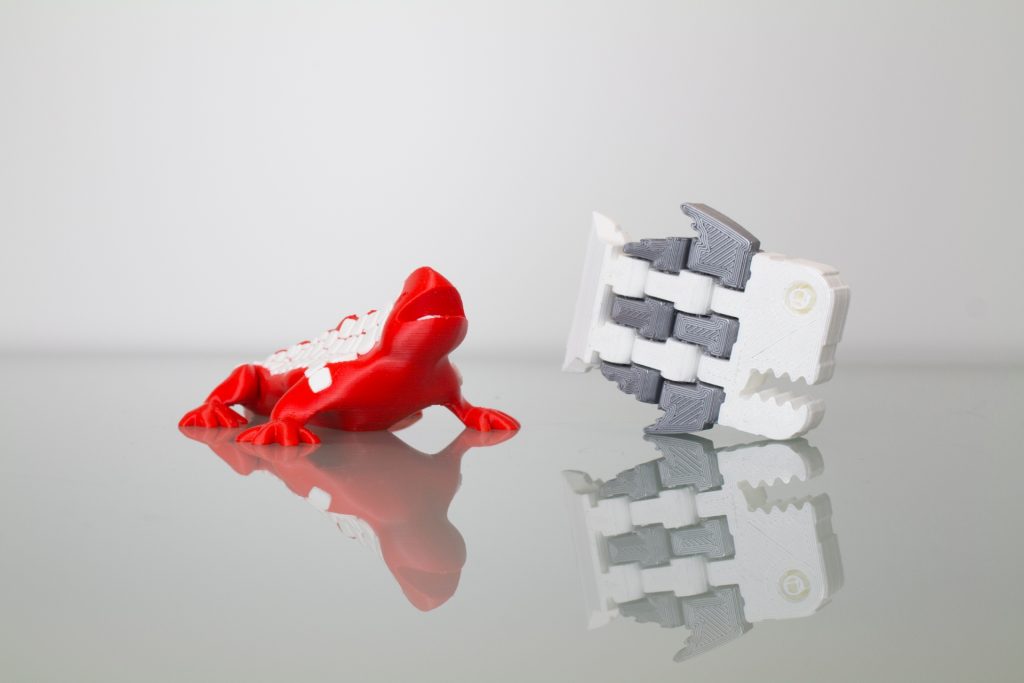
Again, the Sigmax R19 delivered. Both prints had excellent colour separation while still retaining mechanical strength. The articulated model could be bent and contorted, albeit with some resistance. The prints needed minimal post-processing and looked sharp both on and off camera.
The verdict
When all is said and done, the BCN3D Sigmax R19 emerges triumphant. The printer’s large build volume coupled with its functional IDEX system makes for a high output powerhouse. BCN3D covered quantity and quality with its latest machine, allowing users to mass produce models and create production grade mechanical assemblies all in the same massive workspace. A revamped bed heating system along with the addition of internal memory storage could propel the Sigmax to great new heights. For its price point, you’d struggle to find a professional FFF system that meets the needs of small and medium-sized enterprises better than the Sigmax R19.
Buy the BCN3D Sigmax R19 here.
The nominations for the 2020 3D Printing Industry Awards are now open. Who do you think should make the shortlists for this year’s show? Have your say now.
Subscribe to the 3D Printing Industry newsletter for the latest news in additive manufacturing. You can also stay connected by following us on Twitter and liking us on Facebook.
Looking for a career in additive manufacturing? Visit 3D Printing Jobs for a selection of roles in the industry.
Featured image shows the BCN3D Sigmax R19 3D printer. Photo by 3D Printing Industry.


